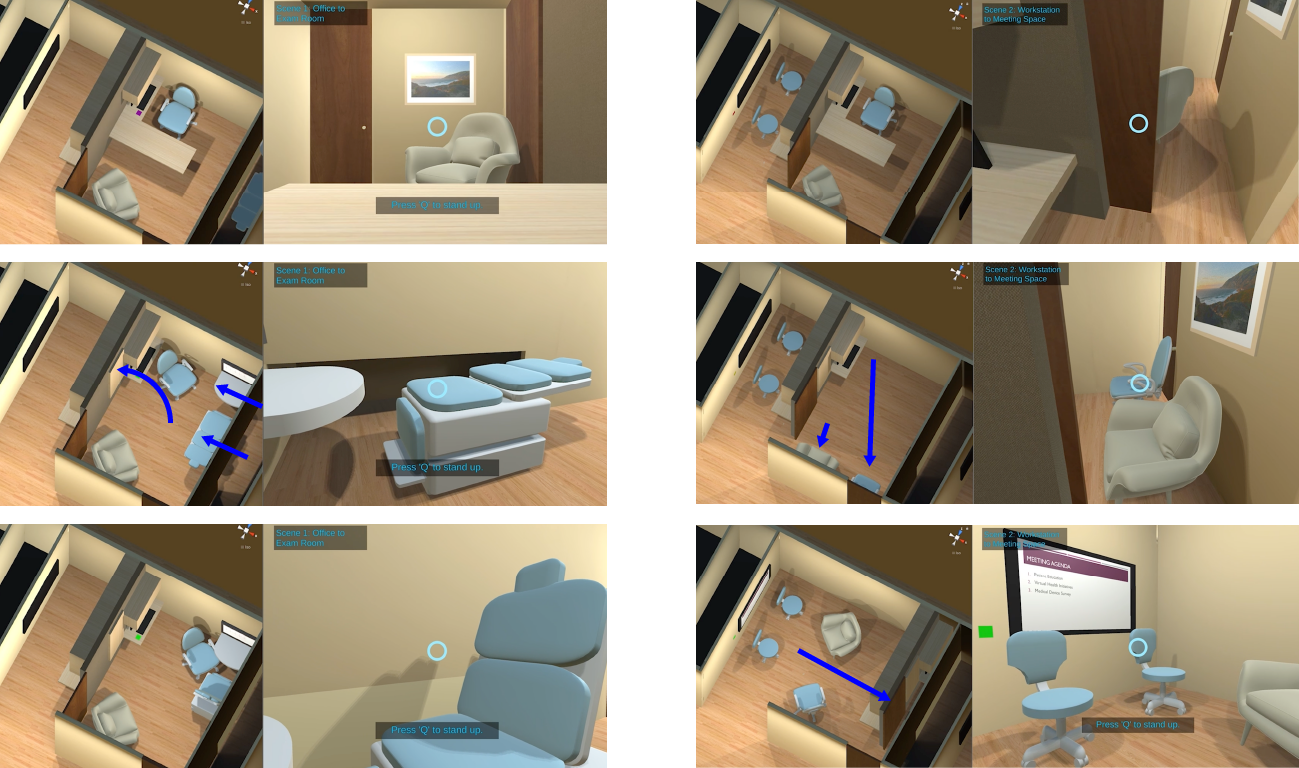Responsive Outpatient Spaces
Recent technological trends in healthcare, such as telemedicine, wearables, and AI-augmented tools, are changing what patients expect out of their doctor’s visit and changing how healthcare workers expect to work in outpatient practices. Architects and engineers need to rethink their process of designing outpatient clinics’ physical spaces and building systems to be more flexible and adaptive to these changing expectations.
Responsive environment technologies (e.g., robotic furniture, smart lighting, etc.) can provide the means to improve the flexibility of interior spaces. Though these technologies have found some initial success in residential buildings, such innovations have yet to be applied to the different kinds of rooms in outpatient clinics.

Initial investigations into such applications have developed virtual reality (VR) models of robotic furniture and wall transformations: how a physician’s office can transform into a patient room (above left), how workspaces can transform into a meeting room between physicians and their assistants (above right). Healthcare workers interacted with these VR models transforming in real-time. While they mostly expressed an enthusiasm for these ideas, some healthcare workers expressed concerns for how the room transformations would fit into their typical medical workflows.
Future work should specifically identify the critical needs of outpatient clinic occupants, be they healthcare workers or patients. Those needs would then need to be mapped to appropriate responsive environment technologies that adapt to those needs at the right time and physical scales. By considering upfront how responsive environment technologies can serve building occupants, architects and engineers can create spaces that enable outpatient practices to serve their patients with a quality healthcare experience.
Technical Skills
Unity, Rhino
Publications
Lu, D., Ergan, S., Mann, D., & Lawrence, K. (2022). The Need for Responsive Environments: Bringing Flexibility to Clinic Spaces. In Construction Research Congress 2022 (pp. 812-821). https://doi.org/10.1061/9780784483961.085
Lu, D. B., Ergan, S., Mann, D., & Lawrence, K. (2020). A Vision for Evaluations of Responsive Environments in Future Medical Facilities. In ISARC Proceedings of the International Symposium on Automation and Robotics in Construction (Vol. 37, pp. 805-812). https://doi.org/10.22260/ISARC2020/0111
